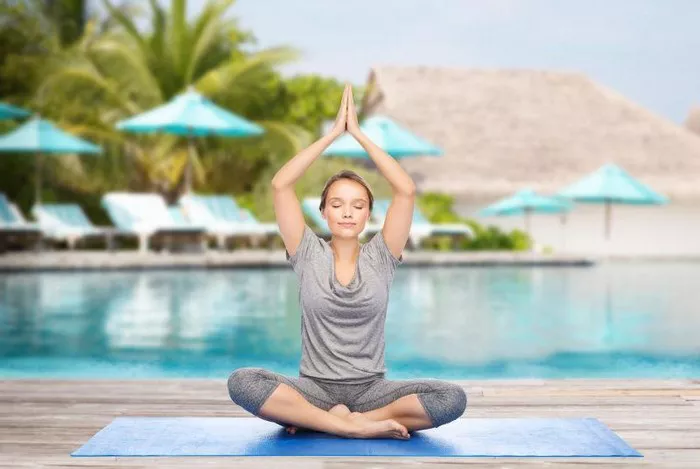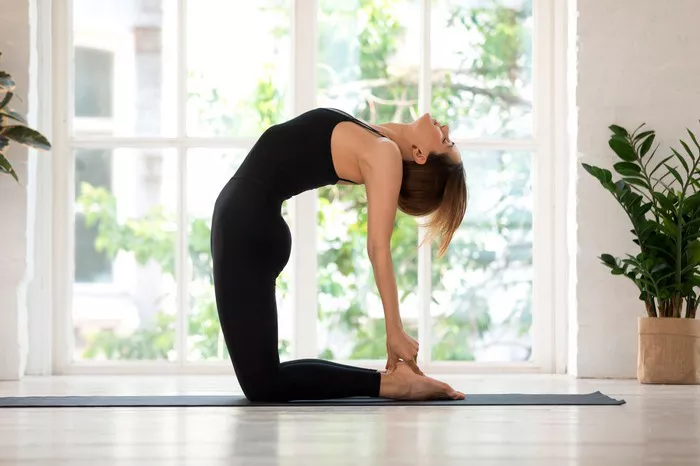When practicing yoga, having the right yoga mat is essential for comfort, stability, and support. A high-quality yoga mat can enhance your practice, prevent injuries, and contribute to a more enjoyable and effective session. But with so many options available on the market, how do you determine the best yoga mat for your needs? In this guide, we will explore the key factors that make a yoga mat ideal, the different materials used, thickness considerations, grip, durability, and recommendations for various types of yoga practices.
Key Factors in Choosing the Best Yoga Mat
1. Material
The material of a yoga mat affects its durability, comfort, and environmental impact. Common materials include:
PVC (Polyvinyl Chloride): Known for its durability and excellent grip, PVC mats are often found in studios. However, they are not eco-friendly and can contain harmful chemicals.
TPE (Thermoplastic Elastomer): A more environmentally friendly option than PVC, TPE mats are lightweight and provide good cushioning but may wear out faster.
Natural Rubber: These mats offer excellent grip, durability, and eco-friendliness. However, they can be heavy and may have a distinct rubber smell.
Cotton or Jute: Natural fiber mats are biodegradable, providing a soft and organic feel. They are best suited for gentle or restorative yoga practices.
Cork: Cork mats provide a unique texture with a natural grip that improves with sweat, making them great for hot yoga.
2. Thickness and Cushioning
Yoga mats come in various thicknesses, which affect their comfort and portability:
1-2mm (Travel Mats): Thin and lightweight, these mats are great for portability but may lack sufficient cushioning for joint support.
3-5mm (Standard Mats): Most practitioners use mats within this range, as they offer a balance of cushioning and stability.
6mm or more (Extra Thick Mats): Ideal for those who need extra joint support, such as individuals with knee pain. However, thicker mats may reduce stability in standing poses.
3. Grip and Traction
Grip is crucial to prevent slipping during poses. Consider the following factors:
Surface Texture: Some mats have a rough texture to provide better traction, while others have a smooth surface with a non-slip coating.
Sweat Absorption: Mats that absorb sweat, like those made of natural rubber or cork, are ideal for hot yoga.
Open-Cell vs. Closed-Cell Construction: Open-cell mats absorb moisture and provide better grip, but they can be harder to clean. Closed-cell mats repel moisture, making them more hygienic but potentially more slippery when wet.
4. Durability
A yoga mat should withstand regular use without breaking down. PVC and natural rubber mats tend to be more durable, while cotton and jute mats may wear out more quickly.
5. Eco-Friendliness
For environmentally conscious practitioners, choosing a mat made from sustainable materials like natural rubber, cork, or organic cotton is a great option. Avoid PVC mats, as they are difficult to recycle and contain harmful chemicals.
6. Portability
If you travel frequently with your yoga mat, a lightweight and foldable mat (such as a thin TPE or travel mat) would be a practical choice.
Best Yoga Mats for Different Practices
1. Best Mat for Beginners
Recommendation: Manduka PRO Yoga Mat
Material: PVC (closed-cell construction)
Thickness: 6mm
Pros: Extremely durable, excellent grip, and cushioned support
Cons: Slightly heavy, requires a break-in period
2. Best Mat for Hot Yoga
Recommendation: Liforme Yoga Mat
Material: Natural rubber
Thickness: 4.2mm
Pros: Superior grip, sweat-absorbing surface, eco-friendly
Cons: Pricier than some alternatives
3. Best Mat for Travel
Recommendation: Gaiam Foldable Travel Yoga Mat
Material: PVC (lightweight construction)
Thickness: 2mm
Pros: Lightweight, foldable, easy to carry
Cons: Less cushioning
4. Best Mat for Extra Cushioning
Recommendation: Jade Yoga Fusion Mat
Material: Natural rubber
Thickness: 8mm
Pros: Extra joint support, eco-friendly, excellent grip
Cons: Heavy, may have a rubber scent initially
5. Best Budget-Friendly Mat
Recommendation: BalanceFrom GoYoga Mat
Material: NBR (Nitrile Butadiene Rubber)
Thickness: 6mm
Pros: Affordable, thick cushioning
Cons: Less durable, can wear out faster
Maintaining Your Yoga Mat
To extend the life of your yoga mat, follow these care tips:
Regular Cleaning: Wipe down your mat after every session with a mild soap or a yoga mat cleaner.
Avoid Harsh Sunlight: Prolonged exposure to sunlight can degrade natural rubber and TPE mats.
Proper Storage: Store your mat in a cool, dry place and roll it loosely to prevent creases.
Use a Yoga Towel: If you sweat a lot, placing a yoga towel on top of your mat can help protect it from excessive moisture buildup.
Conclusion
The best yoga mat depends on your specific needs, preferences, and style of practice. If durability and performance are priorities, consider premium mats like the Manduka PRO or Liforme. If you need a budget-friendly or travel-friendly option, lighter mats like Gaiam Travel Mat or BalanceFrom GoYoga Mat could be ideal. Regardless of your choice, investing in a high-quality mat tailored to your practice will enhance your yoga experience and support your journey toward mindfulness and physical well-being.
Related Topics:






















